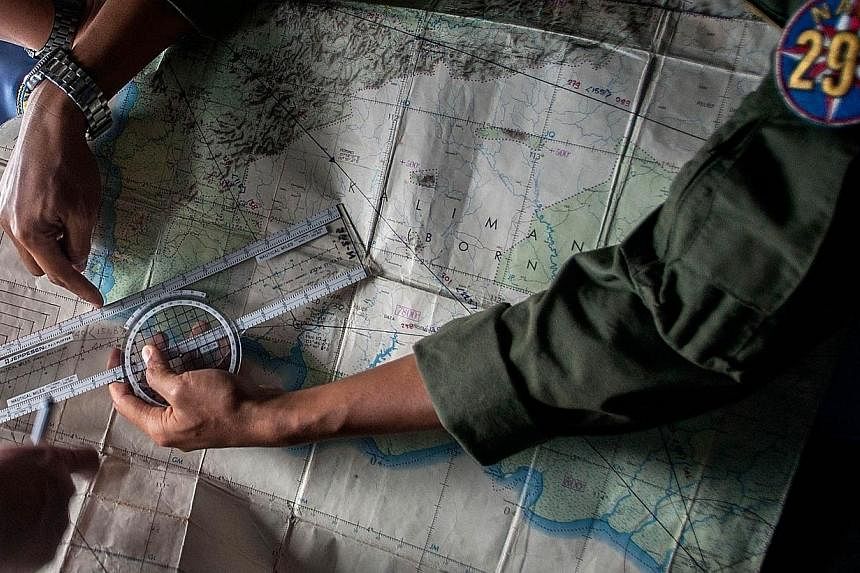SINGAPORE - AirAsia Indonesia flight QZ8501 could have stalled because it was flying too slow, aviation experts have suggested.
The Airbus A320, which was flying from Surabaya to Singapore, lost contact with air traffic controllers early on Sunday morning. A second day of search efforts have ended without any news of the plane being found. It had been carrying 162 passengers and crew.
Mr Geoffrey Thomas, an aviation expert and editor of airlineratings.com, believes that while climbing to avoid the storm it encountered, the pilots could have induced an aerodynamic stall, similar to how the Air France AF447 crashed in 2009.
On Sunday, Indonesian aviation consultant Gerry Soejatman tweeted out a "leaked" picture of an air traffic control screen showing the QZ8501.

"Leaked photo of ATCscreen on #QZ8501, it ended up at 36300ft and climbing but ground speed only 353 knots! Uh oh!," he wrote on Twitter.
An Emirates flight on the same screen was flying at a similar altitude but was much faster at 503 knots.
"The QZ8501 was flying too slow, about 100 knots which is about 160km/h too slow. At that altitude that's exceedingly dangerous," Mr Thomas told Australia's Herald Sun.
"I have a radar plot which shows him at 36,000 feet and climbing at a speed of 353 knots, which is approximately 100 knots too slow ... if the radar return is correct, he appears to be going too slow for the altitude he is flying at."
Flight QZ8501 was initially flying at 32,000 feet. But the pilot contacted air traffic control in Jakarta at 6.12 am local time, requesting to fly at a higher altitude of 38,000 feet and to deviate to the left side of its route in an effort to avoid heavy clouds.
Air traffic control granted the request to deviate to the left, but refused the request to fly higher because there was another plane at that height,The Jakarta Post reported.

Pilots and aviation experts said thunderstorms, and requests to gain altitude to avoid them, were not unusual in that area. However, the A320 radar can have problems in thunderstorms.
"The airplane's performance is directly related to the temperature outside and increasing altitude can lead to freezing of the static radar, giving pilots an erroneous radar reading,"a Qantas Airways pilot with 25 years' experience told Reuters.
The pilot - who requested anonymity - added that the resulting danger is that pilots take incorrect action to control the aircraft.
Extreme weather conditions could have contributed too, Mr Thomas added.
"He got caught in a massive updraft or something like that. Something's gone terribly wrong," he said.
AF447 crashed into the Atlantic Ocean in 2009 while flying from Rio de Janeiro to Paris.
France air traffic controllers said it was also flying through a storm then, and ice crystals formed in the aircraft instruments that caused the autopilot to disconnect.
The pilots then reacted inappropriately when the plane stalled, a final report by the French aviation authorities concluded.
It plummeted out of the sky, killing all 228 on board.


